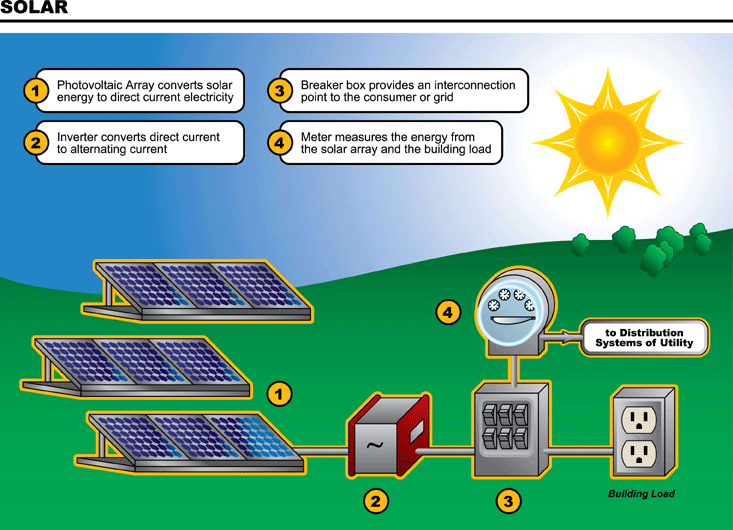What is Solar Energy?
Solar power is a source of energy from renewable sources, obtained from the use of electromagnetic radiation from the Sun
Solar radiation reaching the Earth has been harnessed by humans since ancient times, using different technologies that have evolved over time from conception. At present, heat and sunlight can be exploited by collectors and photovoltaic cells, thermal collectors or heliostats, which can transform into electrical or thermal energy. It is a so-called renewable energy or clean energy, which can help solve some of the most pressing problems facing humanity.
The different solar technologies are classified into passive or active depending on how you capture, convert and distribute solar energy. Active technologies include the use of photovoltaic panels and thermal collectors to gather energy. Among the passive techniques, different techniques are framed in bioclimatic architecture: the orientation of buildings to the Sun, selecting materials with favorable thermal mass or having properties for light scattering, and the design of spaces through natural ventilation.
In this small diagram, we can see how solar energy works
Innovation and Development of Solar Energy.Why we should use Solar Energy?
The use of solar energy in Europe is having in recent years a rapid growth. This is due to the need to replace fossil fuels with other renewable energy, intended to reduce emissions that cause the greenhouse effect and the interest that the European Community has set the development of this type of energy so, the most dynamic markets are England, France and Germany, which have growth rates between 40 and 70%.
Recently been created European Platform for Solar Thermal Technology, dedicated to the development of such energy, for this, measures such as tax cuts that encourage solar installations are made.
The most optimistic forecasts predict that long-term solar thermal energy can cover up to 50% of heating needs in Europe. If the actions are effective, it could end up saving more than 100 billion euros annually by 2020 and about 780 million tons of carbon dioxide that would stop launching into the atmosphere.
All these measures would mean that by 2020, the total energy savings could reach 27% in the home, 30% in the commercial sector, 26% in transport and 25% in manufacturing
Innovation in Spain
Spain is among the European countries with the highest number of sunshine hours, to which European commitments come together in renewable energy installation and the strategic desirability of reducing the large foreign energy dependence and increase energy independence.
All this contributed to Spain was initially one of the first countries in the world in research, development and utilization of solar energy. Thanks to favorable legislation, in 2008 Spain was one of the countries with the most installed photovoltaic power in the world, with 2,708 MW installed in a single year.

CSP Plant
Gemasolar is a CSP plant with thermal storage in molten salts.
Gemasolar is the first commercial solar thermal power plant with a central tower receiver technology and molten salt storage system. It is a solar field of 185 Ha housing the receiver on a tower 140 m high, the power island and 2,650 heliostats, each of 120 m2, distributed in concentric rings around the tower.
The most innovative aspects of this plant, owned by the company Torresol Energy, are the molten salt receiver, the heliostat pointing mechanism and control system, in addition, the storage system can produce electricity for 15 hours without sunlight (for night or on cloudy days). Thanks to this storage capacity, solar energy becomes manageable and can be supplied according to demand. The plant has already reached a fully1 day of uninterrupted supply to the network using thermal transfer technology.
Gemasolar, 19.9 MW, is capable of delivering 110 GWh per year, which can supply power to 27,500 homes. This plant has been operational since May 2011. The official opening was held in October 2011.
http://www.prosun.org/es/ue-solar-sostenible/energia-solar-para-el-futuro-de-europa.html
http://www.energia-solar.org.es/m-energia-solar-europa.html
http://twenergy.com/energia-solar
http://www.torresolenergy.com/TORRESOL/plantas.html















